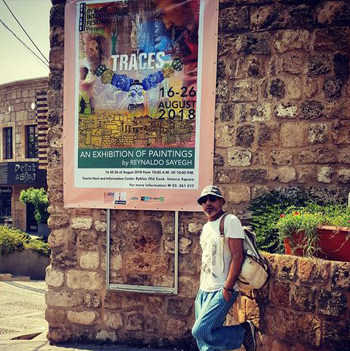TRACES
August 16, 2018 - 10:00 am


Nowadays, in twenty-four hours, a person can collect a huge amount of information about events around the world just by pressing a button.
In comparison, it could be said that the information that archeologists painstakingly gathered, over years of research, about the people who had lived on the East side of the Mediterranean for two, or even three millenniums BC, is almost as nothing.
Faded writings on walls and stones, legends passed down from one generation to another, art work that survived and a few facts about things that existed back in time are all we actually have.
“Finikia”, was a name given by the Greeks to this Eastern Mediterranian area because of the shell that dyed yards and yards of textile.
Life, was all about cities in a continuous inner conflict, ships that were as strong as rocks, cedar wood that was everywhere – but almost got extinguished, art that was copied, reinvented and mastered, money and fortune that were given great importance, and, finally, legends that survived and were immortalized by later art.
Added to this list were hundreds of wars, conquests and invasions, earthquakes and natural disasters.
Sadly, very little information was saved to the extent that some people actually wonder if Phoenicians ever existed?
“TRACES” has tracked the Phoenicians everywhere and come back with only a huge amount of information. It has gone so far as to create some new legends from the Bronze Age, the Iron Age through to the Persian, Greek and Roman invasions, the expansion into the whole Mediterranean and, finally, to the
extinction of that race.
More than thirty different paintings, rich in colour, with both familiar and invented forms, give an enticing glimpse into the almost-lost history of Phoenecia.
“TRACES”
Opening ceremony: Thursday 16th of August at 7pm, but viewers welcome from 10am, at the Tourist host and information Centre of Byblos International Festival in the old Souk of Byblos, UNESCO Square, Byblos.
